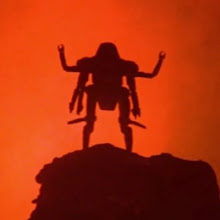
2000's Italian for Beginners was the last major film to subscribe to the cinematic rules promulgated by the Danish Dogme 95 movement. The plot: All of the characters have recently been affected by the death of a loved one, and as their lives begin to unravel, they begin a new search for love and companionship. (Think of it as depressing Danish send-up of The Big Chill.). Unlike just about every American independent film-maker from 1993 to 1999, though, the writer/director, Lone Scherfig, did not pepper the narrative with alienated and woebegone lonely-hearts who incessantly bemoan their isolation from the world. Though this film easily could have degenerated into existentialist nonsense, it actually boasts a good natured feeling that is unusual in the cinemas both in 2000 and today, a decade later. The actors, then and still unknowns to American movie-goers, perform admirably, and as the film progressed, I actually found myself concerned for their welfare. Imagine that! A strange reaction considering that I am so accustomed to throwaway stereotypical characters in most films these days. Sigh.
A number of very interesting films have arisen from the Dogme 95 movement, including 1996's Breaking the Waves (written and directed by the then still tolerable Lars Von Trier), 1999's bizarre Harmony Korine directed Julien Donkey-Boy (which at times is a bit more expressionist than Dogme 95, if that can be said), and 1998's quite good Festen (a/k/a The Celebration).
Dogme directors vow to abide by the following rules:
1. Shooting must be done on location. Props and sets must not be brought in (if a particular prop is necessary for the story, a location must be chosen where this prop is to be found).(See also here or more on the vow.).
2. The sound must never be produced apart from the images or vice versa. (Music must not be used unless it occurs where the scene is being shot).
3. The camera must be hand-held. Any movement or immobility attainable in the hand is permitted. (The film must not take place where the camera is standing; shooting must take place where the film takes place).
4. The film must be in colour. Special lighting is not acceptable. (If there is too little light for exposure the scene must be cut or a single lamp be attached to the camera).
5. Optical work and filters are forbidden.
6. The film must not contain superficial action. (Murders, weapons, etc. must not occur.)
7. Temporal and geographical alienation are forbidden. (That is to say that the film takes place here and now.)
8. Genre movies are not acceptable.
9. The film format must be Academy 35 mm.
10. The director must not be credited.
The ten dictates were written by Danish directors Thomas Vinterburg (who directed Festen) and Von Trier, perpetrator of the aforementioned Breaking the Waves and the interesting-though-flawed Dancer in the Dark, also from 2000, which featured the musician Bjork as a put-upon immigrant mother in 1950s America. (Side note: Dancer boasted a number of courtrooms scenes which indicated a fundamental misunderstanding of the American criminal justice system. The original New York Times reviewer noted this fact in his commentary, quipping that the depicted "murder trial that seems to have been inspired by watching poorly dubbed episodes of 'Law and Order' on Danish television."). In the years that followed, Von Trier has become a pretentious hack, although perhaps he always was, but there at least used to be a scintilla of intriguing material in his films, which cannot be said for his more recent cinematic output.
A funny thing: The Dogme 95 vow essentially outlaws those things which low budget film-makers cannot afford anyway; thus, it elevates to virtue the pre-existing poverty of the film-maker and fobs off a lack of resources as a commitment to a new cinema. However, adherence to a readily defined set of rules could do many a film-maker much good. Working within a pre-arranged set of constraints fosters creativity. One need only look to the cinematic detritus arising at the multiplexes to ascertain that gobs of money and creative freedom are doing little, if anything, to produce art, genius, or even worthwhile films in today's America.





2 comments:
Even if one disagrees with recent aesthetic decisions by von Trier, he is a far cry from being a hack - someone "whose services may be hired for any kind of work required of him; a common drudge, = HACKNEY 3; esp. a literary drudge, who hires himself out to do any and every kind of literary work; hence, a poor writer, a mere scribbler."
Furthermore, although many were annoyed by the pretension of the supposed "America" trilogy (Dogville, Manderlay, and the as yet unmade Wasington), one should not ignore the genius of The Five Obstructions, 2003, a brilliant documentary about the creative process, and the stunning and powerful Antichrist, 2009, perhaps Trier's best film.
Bah, humbug.
Post a Comment